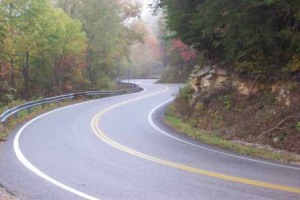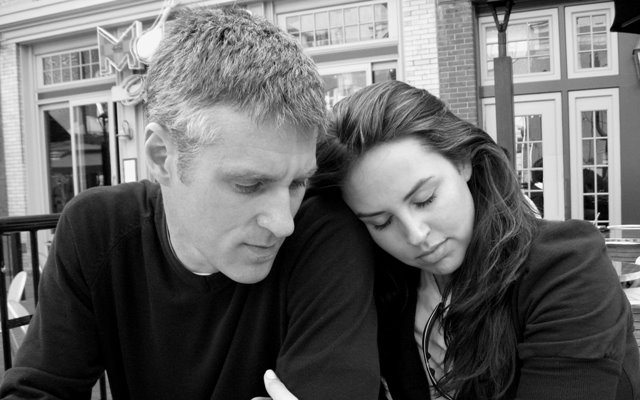
In Tennessee, we’re blessed that our state superbly maintains its smaller state highways and backroads. You really have to get onto a small county road in Tennessee to find a marginally maintained road. Although the state seems to be working inexorably to straighten every one of them, some of the winding backroads that give Tennessee its character still remain. In east Tennessee, some of those roads have gained much deserved fame – 129 (Deal’s Gap), the Blue Ridge Parkway, or the Cherohola Skyway. West Tennessee can’t claim roads with the drama or the vistas of those roads. However, if you’re a restless bike rider with a soft spot for curved asphalt, West Tennessee has some roads you should get to know.
I want to share some of the wonderful roads I’ve found and ridden frequently in West Tennessee. They’ll be identified by their state highway number and, sometimes, a nearby town. You’ll still need a good map to find some of them. I’ve tried to provide some simple potential hazards to look out for. I sometimes start with a chauvinistic description that compares them to a fictitious female stereotype. That’s intended in good humor and to impart a sense of the personality I think the road has. If you don’t like such devices, just skip the first sentence and don’t throw a fit.
I have 3 preachy things first:
- I don’t encourage you to exceed any posted speed limits. Any comments about speed limits or traffic cops are simply my opinions for me and my riding habits. Don’t ride like me. I have a defective sense of mortality. If you do speed and you get caught, stop and face the music. The police officers are just doing their job and don’t deserve to die trying to catch you before you kill yourself or someone else. (If you caught the reference about me running from a sheriff in another post, then just so I don't sound hypocritical, I didn't know he was a sheriff.) You know you’re breaking the law, so once caught, pay your fun tax and call it even. If you’re really stupid like me, go to the race track. It’s more fun and much, much safer. Last, I mean no disrespect to any policemen. I’ve ridden with many of them, and to a man, they’re good guys and highly recommended riding partners.
- Treat the locals with respect. If you piss them off, they’ll call the local sheriff or the highway patrol and you’ll have ruined a good thing for yourself and everyone else. That’s not just with respect to your riding behavior. If you like loud pipes (and what rider doesn’t?), then keep in them in mind whenever you’re close to homes. You and I might want a home beside a race track, but, believe it or not, most people don’t.
- If you ride, wear the best gear you can get - helmet, gloves, riding suit (leather is best), boots, back protector, etc. I'm alive today because Arai makes the best helmet you can put your head inside. I can still walk because a plated back protector can provide just the margin you need to beat the harsh realities of Newtonian physics. I still have all my skin because Vanson Leathers puts stitches to the most beautiful and tough cow skin you can wrap around your tender epidermis. If you don't have the money or the sense to wear some gear, get a go-cart and stay in your driveway.
128 (Savannah-Clifton-Linden)
A bombshell that starts off mild, but will bite you when she finally gets you alone.
Old 128 is left just past a Shell station if you're headed east through Savannah. The new name is Clifton Road (actually, this has changed, but I didn't catch the new name). Go north out of Savannah on old 128. It begins as a very nice smooth road full of good sweepers and pretty scenery. The speed limit is a completely ludicrous 45 mph. The fact that this is no longer a state highway is a blessing - little traffic, no cops.
You'll eventually intersect the new and boring 128 less than 10 miles from Clifton. New 128 is an unimaginative, flat road that starts east of Savannah. (I don't know the exact mileage). Slow down in Clifton - you will almost always see a cop trolling for revenue.
128 north from Clifton is much better than the section to the south. A perfect repaving job on the northern half of the north section makes this a road for serious grins. Light traffic, fantastic curves – it’s a delight. Just as a side note, it's also a road for serious hurt if you get carried away. Watch for gravel where small side roads intersect 128. Some lead to gravel pits nearby and that is a bad thing. I was painfully reminded of that hazard when I low-sided my CBR954RR into a tree at about 70 mph. A particularly good loop is the triangle formed by 128-13-228.
There are a few good side roads off of 128 that you’ll see along the way. Explore them, but carefully, they’re smaller and less well maintained and that’s where the houses are located. T-boning a minivan leaving a driveway will screw up your riding plans for the day.
228 (Clifton)
Girl-next-door sister to 128.
Just on the north end of Clifton, turn right at the sign. The pavement is good, but watch out for a few broken patches. I've not noticed any problems in critical areas. Blind turns abound. One right-hander in particular will sucker you when headed back toward Clifton. Because the trees practically cover the road, fallen leaves can be a problem in late summer and fall.
13 between 228 and 128 (Bisects TN)
Homecoming queen with lots of big protective brothers. She’s fun if you can get her alone.
At the end of 228 turn left on 13 and hang on. It starts out calmly but has some curves built for lean angles. For the next few miles, it's sweet, particularly the section between 48 and 128. Highway patrol is frequently spotted on this road, especially in this section. 13 is a generally good road for laid-back touring from 64, north all the way past I-40. You'll see flocks of Harley's and Goldwings on 13.
48 and 230 (South of I-40, north of Centerville)
Very naughty, very sexy, very dangerous roommates.
I almost left these two off the list. They’re too good and too close to I-40. If you ride one, you ride the other. They’re joined at their sexy hips. Just be careful or you’ll be sorry. 48 is the sick one. Probably because of their proximity to I-40, I have seen the occasional trooper on them. Update: 48's bridges are under construction as of the end of July.
104 (Lexington to Milan or Lexington to Reagan)
A wild girl turned mom, sweet curves, but not racy anymore.
Way too popular with local bikers on the weekend - citations are common. It’s best on a weekday when traffic is light. Was once great, but now too many houses along the road with the expected gravel and slow car traffic. A county sheriff lives on the road. What a shame. Take it easy.
438 (North of Linden - east from 13)
Farmer’s daughter. Cleans up real nice.
Fun, but can be unexpectedly hazardous. Apparently, Mennonites live in the valley. Beware of horse crap on the road. There is actually enough to be a hazard. This is turn-around-and-do-it-again road when conditions are good. Little sections with great side-to-side transitions are very entertaining.
232 (South of Land Between the Lakes)
The nymphomaniac gymnast gone bad.
South off 79E from Paris Landing, it was an absolute giggle-fest of a road. However, now it's not. A couple of marina's were built out on some side roads and now the traffic on the road is too heavy - both in terms of congestion and weight. The pavement is in poor condition. Several areas where shadows hide broken spots and pot-holes are truly dangerous. Gravel from cross road used to be non-existent, now it's plentiful. Watch out for pickup trucks towing boats on the wrong side of the road. Usually several bikes will be there on the weekend, but it’s not crowded. Saw a sheriff there the last time I was there, but he was talking to the riders and not acting like a tax collector - that's an increasingly rare thing now.
That’s it for now. If you know of others, please comment below. Once I ride them and find them worthy, I’ll add them.






